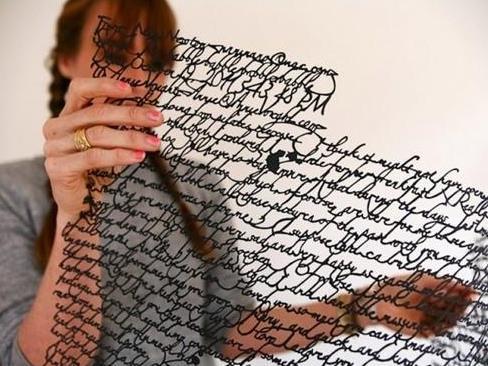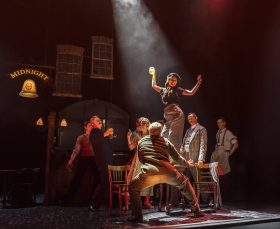Recently I participated in a bio writing workshop for artists, which was a bit like a career speed dating session – half hour slots to assess and review how artists had written their biographies.
It was not the skill level presented that surprised me, rather the confusion surrounding the task at hand. The majority of the artist bios were just abridged versions of their artist statements: ‘I am a painter inspired by…’ and ‘My work uses…’.
I was left pondering where had they exhibited? Where had they studied? Had they been a finalist in a prize or participated in a residency? What were the professional moments that had punctuated their career to date?
Let’s get it clear: An artist biography is simply taking that shopping list of date-driven achievements – your Curriculum Vitae – and distilling it, ordering it, and massaging it into a couple of sexy paragraphs. It is not a flowery statement about what you make.
You want to stimulate enough interest that the reader is intrigued to learn more (aka a link to your full CV) and to spend more time with you (aka to cruise your website and look at your work or get themselves off to see your exhibition).
In a nutshell, an artist’s biography is about instilling confidence.

Image CC pexels.com
The recipe for an artist bio
Do a task: Read a CV; now try to remember what was on that list. In short, a well written biography is far more memorable than a bullet-point driven CV. And, in today’s climate of over-information, more than ever we need to be ‘sticky’.
The skill is learning how to digest that list of information and turn it into a user-friendly piece of text. This is what you need to do:
1. Evaluate
Print out that big-ass date-driven list called your CV. You need to look at the information in front of you. Just think logically. Draw out the highlights – circle or highlight the milestones, and order them.
2. Contextualise
Start by contextualising yourself, that is where you position yourself – are you an emerging artist or established? International renowned, First Nations, or working across locations? What is the primary definition for readers to locate who you are? Today we are less interested in age and and where you were born.
Write it in the third person: ‘Fairley graduated with a MFA from blah before placing her writing career across Southeast Asia and Australia’, or ‘Backed by 14-years in the gallery sector, Fairley turned to arts journalism in 2004.’ Distancing yourself creates a tone of authority in the text.
3. What
Next is what medium you work in: ‘Smith creates site responsive installations that use everyday detritus to speak about contemporary societal waste.’ Or another example, ‘Smith is a sculptor working in a modernist vernacular and within the traditions and scale of heavy metal.’
4. Gongs
Then weave that into your exhibition history, citing major shows. It’s time to add a bit of weight. Break it down into digestable amounts: identify key career moments but weight them towards the current.
I also suggest to include the exhibitions that are easily searchable online, or at least on your website.
5. Testimonial
There is also space here for testimonials – a quote from a critic or gallery director. And if not do not have one, you could always add a quote by you: Fairley says she is compelled by objects: ‘I feel like a child at a fair salavating over cotton candy. I just have to have it; use it.’
6. Connection
You can add any major commissions, collaborations, awards or residencies here. The order really depends on the audience.
Think of it like you are introducing a colleague. Often you will mention the things that you think will connect the two people. The same goes for writing about yourself.
7. Now
I would then bring the reader back to now; what career moments are you working towards? – a new show, a residency, a new direction in the work – but keep it short.
8. Education
And wrap up with the education. As your career develops, it is not always necessary to lead with your education; what has followed is a stronger selling point. However, when your CV is on the light side and you are in your early career, your education will sit up higher in your bio to add that weight that is needed to give you professional clout.
Keep it concise, clean and readable. Good writing simply is about keeping it enjoyable to read.
For a written biography, I would recommend keeping two on file: A short blurb around 300 words is a good length – it is about a third of a page. For most grant applications this is all you will get. And on a website people are not up for reading much more than that. You can always add a link to a CV. I would also recommend keeping a longer one-page version on file.
Read other artists biographies and revisit yours often. Ask yourself: How does it stand up? Use the same critical eye that you would for another artist’s work.

Taking it up a level
When you are asked to send your bio, don’t just hit the attach and send buttons. Always open your bio and adjust it so that it addresses the audience or specific function. For example, if you are pitching a commission to a designer you might want to be sure to highlight other major commissions or collaborations you have been involved in.
Read: 50 ways to land a job in the arts
Likewise if it is a collector you are pitching to, you might want to include the other collections your work is included within to bolster credibility, or if it is a pitch for a public artwork then you would want to draw attention to you exhibition experiences in the public arena to show your capacity to work in this arena.
Bottom line – the artist profile is about instilling confidence.





